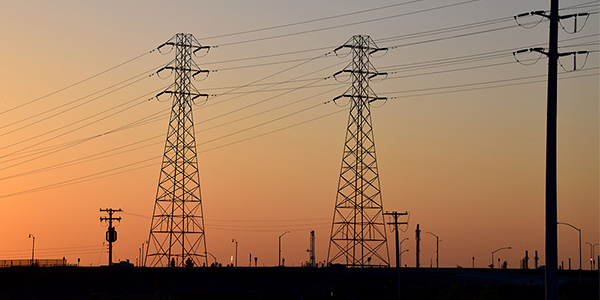CAISO issued a draft final proposal for its summer readiness market enhancements initiative on Thursday, just three weeks after presenting a straw proposal in the form of a slide deck — not the usual written plan — because of what it said were time constraints.
The ISO held a virtual meeting Monday to discuss the draft final proposal and is pushing ahead to have the Board of Governors approve it before the end of March, with implementation scheduled for June 1. Passing a stakeholder initiative that quickly shaves at least a year off the usual deliberative process.
The extraordinary speed with which CAISO is advancing the initiative stems from last summer’s energy emergencies, including the rolling blackouts it ordered in August, and its need to avoid further capacity shortfalls this summer. (See CAISO Advances Summer Readiness Plan.)
At the start of Monday’s meeting, COO Mark Rothleder made an impromptu speech asking stakeholders to understand the urgency of the situation and the shortened timeline that has left some frustrated. He said CAISO management has taken stakeholder concerns seriously but must keep moving forward as expeditiously as possible.
“These are very important and, in some cases, contentious issues that we’re grappling with,” Rothleder said. “I understand that not everybody is going to like where we landed … but I want to assure you that we have tried to balance as much as we could under the time frame for this summer. What we’re proposing here is really coming to the limits of our ability to execute and implement for this summer.”
The plan responds largely to a root-cause analysis of the state’s Aug. 14-15 blackouts, which identified problems such as transmission constraints, questionable exports from the ISO during tight supply conditions and market practices that undermined supply. (See CAISO Says Constrained Tx Contributed to Blackouts.)
The initiative’s proposed enhancements focus on the often-arcane market practices that CAISO determined interfered with resource adequacy. Its goals include meeting load in the ISO’s balancing authority area this summer, providing incentives for supply during tight system conditions, and “equitably [balancing] the reliability of serving CAISO … load with the reliability of exports, while providing open access to the CAISO transmission system.”
The plan includes measures dealing with export and wheeling priorities such as using the ISO’s residual unit commitment process to distinguish between high-priority and low-priority exports. It also proposes modifying the scheduling priority of wheel-through self-schedules across the CAISO balancing authority area so they have equal priority with high-priority exports.
The plan addresses issues related to CAISO’s Western Energy Imbalance Market, including upgrades to resource sufficiency tests intended to prevent participants from “leaning” on the market when they do not have sufficient supply.
“CAISO proposes to enhance the resource sufficiency evaluation by making … changes to its bid range capacity test that will account for resource derates and rerates, ensure imports represented through mirror resources are not double counted [and] include load uncertainty within each balancing authority area’s bid range capacity requirement,” the draft final proposal says.
Sticking to Principles
Market incentives for imports during tight system conditions, including provisions for make-whole payments for real-time imports, also are part of the plan.
Making sure that storage resources maintain a minimum state of charge is another plan component. Storage of solar power is essential for CAISO to meet demand in heat waves during the net peak, as the sun sets but demand remains high in the early evening. The August blackouts and close calls over Labor Day weekend occurred in the net peak.
There are currently 550 MW of storage connected to CAISO’s grid but 1,800 MW are expected by summer.
Rothleder and others said several items had been removed or scaled back in response to stakeholder comments, including deleting an item that would have made system market power mitigation part of the proposal. But the time for further changes is ending, he said.
“We have to start preparing for this summer, and we have to balance things out, and we have to be principled about what we’re doing here,” Rothleder said. “We believe this is a fair and an appropriate approach for this summer. We understand that there may be some additional things that people would want to do if we had more time. We are open to that for the future, but we’ve got to start moving in the direction of implementing these things.”
A separate resource adequacy enhancements initiative is advancing on a similarly fast track, with a meeting scheduled Tuesday on a draft final proposal.
The EIM Governing Body is scheduled to take up the plan on March 10 followed by the ISO’s Board of Governors on March 24-25.




